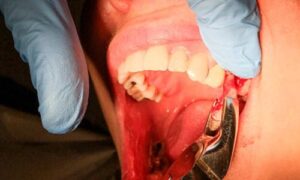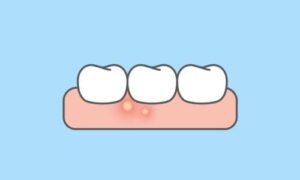Invisalign is a popular choice for straightening teeth. Unlike traditional braces, it uses clear, removable aligners. Many people choose Invisalign for its convenience and discreet appearance. However, one common concern is the pressure felt when wearing these aligners. This article will explore the concept of Invisalign pressure, what it means, and how to manage it effectively.
What is Invisalign?
Invisalign is an orthodontic treatment that uses a series of clear, custom-made aligners. These aligners gradually shift your teeth into their proper positions. Each aligner is worn for about two weeks before moving on to the next one in the series. The total treatment time varies but usually ranges from several months to a few years, depending on the case’s complexity.
How Does Invisalign Work?
The aligners are made from a flexible plastic called SmartTrack. They are designed using 3D imaging technology to fit snugly over your teeth. Each set of aligners is slightly different from the previous one. They apply gentle pressure to specific teeth, gradually moving them into alignment.
Understanding Invisalign Pressure
“Invisalign pressure” refers to the sensation felt when the aligners exert force on the teeth. This pressure indicates that the aligners are working to move your teeth. It is similar to the pressure felt with traditional braces but generally less intense.
Why Do You Feel Invisalign Pressure?
You may feel pressure when you start wearing a new set of aligners. The aligners are designed to fit your teeth in their new, slightly shifted positions. As your teeth move, the pressure will decrease. When you are ready to switch to the next set of aligners, the pressure should be minimal.
Is Invisalign Pressure Painful?
Most people describe Invisalign pressure as mild to moderate discomfort rather than pain. It is usually most noticeable when wearing a new set of aligners. Over-the-counter pain relievers can help manage any discomfort. If you experience severe pain, you should contact your dentist.
Managing Invisalign Pressure
Adjusting to Invisalign pressure is an important part of the treatment process. Here are some tips to help you manage it effectively:
1. Follow Your Dentist’s Instructions
Your dentist will provide specific instructions on how to wear and care for your aligners. Following these instructions carefully can help minimize discomfort and ensure effective treatment.
2. Wear Your Aligners Consistently
For the best results, you should treat your aligners for at least 20-22 hours daily. Removing them frequently can prolong treatment and increase discomfort.
3. Use Cold Compresses
Applying cold treatments to the outside of your mouth can help reduce inflammation and numb discomfort. Use the compress for 10-15 minutes at a time.
4. Take Pain Relievers
Over-the-counter pain relievers like ibuprofen or acetaminophen can help manage any discomfort. Always follow the dosage instructions on the label.
5. Stick to Soft Foods
Eating soft foods can help reduce discomfort during the first few days of wearing a new set of aligners. Avoid hard, crunchy, or sticky foods that can aggravate pressure.
6. Stay Hydrated to Prevent from Invisalign Pressure
Drinking plenty of water can help keep your mouth comfortable. It can also prevent dry mouth, which can occur with aligner use.
Benefits of Invisalign
Despite the pressure, Invisalign offers many benefits over traditional braces. These include:
1. Discreet Appearance
Invisalign aligners are clear and virtually invisible. Most people won’t even notice you’re wearing them.
2. Comfort against Invisalign Pressure
The smooth plastic aligners are more comfortable than metal braces, which can irritate the inside of your mouth.
3. Convenience
You can remove the aligners for eating, brushing, and flossing. This makes it easier to maintain good oral hygiene.
4. Fewer Dental Visits
With Invisalign, you typically need fewer dentist visits than traditional braces. You will still need regular check-ups, but they are usually less frequent.
5. Effective Results
Invisalign is effective for many dental issues, including crowding, spacing, and bite problems.
Potential Drawbacks
While Invisalign offers many benefits, it is important to be aware of potential drawbacks, including:
1. Discomfort
As discussed, you may experience some discomfort due to the pressure exerted by the aligners.
2. Compliance
For Invisalign to be effective, you must wear the aligners as directed. Failing to do so can prolong treatment and affect results.
3. Cost
Invisalign can be more expensive than traditional braces. However, many dental insurance plans cover a portion of the cost.
4. Limited Suitability or Invisalign Pressure
Invisalign may not be suitable for very complex orthodontic cases. Your dentist will be able to determine if you are a good candidate.
How to Get Started with Invisalign
If you are considering Invisalign, the first step is to schedule a consultation with your dentist. During this consultation, your dentist will:
1. Evaluate Your Teeth
Your dentist will examine your teeth and determine if Invisalign is a suitable treatment option.
2. Take Impressions
If you are a good candidate, your dentist will take impressions of your teeth. These impressions will be used to create your custom aligners.
3. Discuss Your Treatment Plan
Your dentist will discuss your treatment plan, including how long you can expect to wear the aligners and your anticipated results.
4. Start treatment
Once your aligners are ready, you will start wearing them according to the dentist’s instructions. Regular follow-up visits will ensure your treatment is progressing as planned.
Tips for Success with Invisalign
Totreatmentthe best results with Invisalign, it is important to follow these tips:
1. Wear Your Aligners as Directed
Consistency is key to successful treatment. Make sure to wear your aligners for the recommended 20-22 hours treatment
2. Clean Your Aligners Properly
Clean your aligners daily to prevent bacteria build-up and maintain oral hygiene. Use a soft toothbrush and clear soap, avoiding hot water that can warp the plastic.
3. Keep Up with Dental Appointments
Regular check-ups with your dentist are crucial to monitor your progress and make any necessary adjustments.
4. Maintain Good Oral Hygiene
Brush and floss your teeth regularly to prevent cavities and gum disease. Removing your aligners while eating and drinking (except for water) can help keep them clean.
5. Use Aligners Chewies
Chewies are small, rubbery devices that help seat your aligners properly on your teeth. Using them can help reduce pressure and ensure your aligners are working effectively.
Overview of Invisalign Pressure
Invisalign is an effective and convenient option for straightening teeth. While you may experience pressure as your teeth move, this is normal. Understanding Invisalign pressure and following your dentist’s instructions, you can manage discomfort and achieve the best possible results. If you have any concerns about Invisalign pressure, don’t hesitate to contact your dentist for advice and support.
Remember, a beautiful smile is worth the effort, and Invisalign can help you achieve it with minimal hassle.














